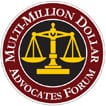California drivers, even if they have never been in an accident before, can guess how hard it is sometimes to determine who was at fault in a crash. Some forms of negligence are hard to prove, such as inattentive driving. The difficulty is even greater in multi-vehicle crashes where perhaps more than one driver is to blame.
For example, two rear-end collisions involve three drivers. Driver A was obeying the traffic laws while Driver B and C were tailgating, speeding or doing something else that was reckless and negligent. Driver A may pursue a claim against both Driver B and C since Driver C increased the force of the impact of Driver B with Driver A.
In this case, even Driver B could file a claim against Driver C, or vice versa; it all depends on the degree of negligence. This state follows the law of comparative fault. Now, it could be that Driver B was not being negligent and that Driver C forced him or her into Driver A. In this case, Driver A can only pursue a case against Driver C.
None of this can be established, of course, without evidence. This is where the police report, eyewitness testimony and physical findings could come into play.
Those who were injured in a car crash and who believe they have grounds for a claim may want to see a lawyer. If the case holds up under the lawyer’s evaluation, the lawyer may take on the case, assist with the gathering of evidence and then proceed to settlement negotiations. A network of investigators, medical professionals and, if litigation becomes necessary, expert witnesses may assist as well. A successful claim might cover medical expenses, lost wages and more.








